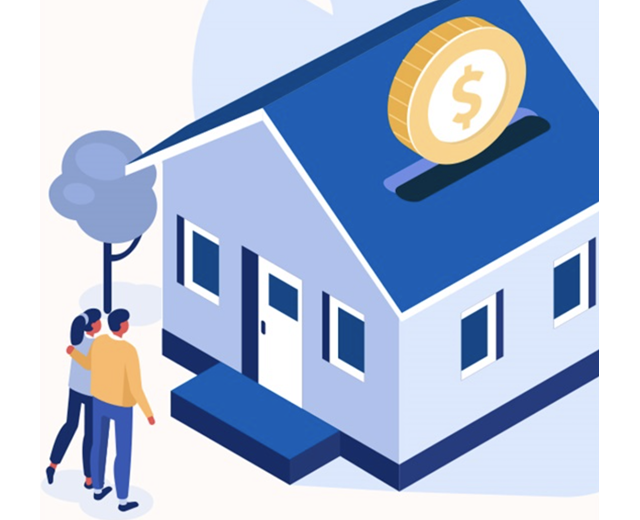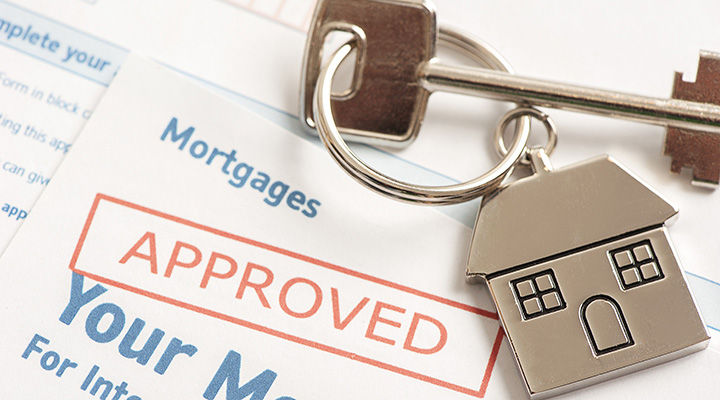Conventional Mortgage Loans: Your Overview to Standard Home Financing
Conventional Mortgage Loans: Your Overview to Standard Home Financing
Blog Article
The Essential Aspects to Consider When Picking In Between Fixed-Rate and Adjustable-Rate Mortgage Fundings
When examining home mortgage alternatives, debtors deal with a critical choice between adjustable-rate and fixed-rate finances, each presenting potential challenges and distinct benefits. Secret considerations such as interest rate security, predictability in monthly settlements, and the ramifications of possible price changes can significantly impact lasting economic wellness.
Rate Of Interest Rate Stability
When picking a home mortgage, understanding rate of interest rate stability is vital for notified decision-making. Interest prices can substantially affect the general expense of a mortgage, and identifying the nature of these rates is vital for customers.
On the various other hand, adjustable-rate home loans (ARMs) start with lower first prices that may transform periodically based upon market conditions. While this can result in reduced settlements at first, it also presents uncertainty, as consumers may face increased repayments if rate of interest prices rise. For those thinking about an ARM, it is vital to assess the chance of price adjustments, the possibility for repayment increases, and the size of the preliminary fixed-rate period.
Eventually, the choice in between adjustable-rate and fixed-rate home mortgages depends upon specific danger tolerance and financial conditions. Comprehending rates of interest stability assists customers make informed choices that straighten with their lasting monetary goals.
Regular Monthly Settlement Predictability
While borrowers typically prioritize rates of interest security, the predictability of regular monthly repayments is just as essential in the mortgage choice process (Conventional mortgage loans). Month-to-month settlement predictability plays a vital role in budgeting and financial planning, as it straight influences a home owner's capital and overall economic wellness
Fixed-rate home mortgages use a consistent regular monthly payment throughout the life of the loan, permitting debtors to expect and plan their expenditures effectively. This security can be especially useful for novice homebuyers or those on a set revenue, as it removes the unpredictability related to fluctuating settlements.
On the other hand, adjustable-rate mortgages (ARMs) generally feature lower preliminary repayments that can transform with time, bring about possible variability in monthly commitments. While at first attractive, this changability can complicate financial planning, especially if borrowers do not represent future price modifications.
Potential Rate Changes
In the realm of variable-rate mortgages (ARMs), possible price changes represent a substantial factor that consumers should thoroughly take into consideration. Unlike fixed-rate home loans, where the rates of interest stays unchanged for the life of the finance, ARMs are characterized by fluctuating rate of interest that are tied to market indices. This irregularity can bring about considerable changes in regular monthly payments, affecting the consumer's monetary planning and budgeting.
Typically, ARMs have a first fixed-rate duration throughout which the rate of interest is secure. Hereafter period, nonetheless, the price readjusts at established intervals-- typically every year. Debtors must be conscious of the margin and index made use of to calculate these adjustments, as they directly influence future rates of interest. Additionally, ARMs frequently consist of caps that limit just how much the rates of interest can enhance at each adjustment and over the life of the funding, which can offer some level of protection versus drastic rate walkings.
Comprehending these potential adjustments is crucial for customers, as they straight influence long-term settlement obligations. Consequently, assessing personal monetary situations and run the risk of tolerance is necessary when choosing whether an ARM aligns with one's financial objectives.
Loan Term Considerations
Loan term considerations play a pivotal role in the decision-making process for borrowers picking in between fixed-rate and adjustable-rate home loans. The length of the loan term considerably affects monthly settlements, rate of interest, and general economic planning. Fixed-rate home loans generally offer regards to 15 to 30 years, supplying security in regular monthly settlements and predictability in budgeting. This can be specifically appealing for debtors who plan to remain in the same home long-term and like the certainty of set settlements throughout the life of the lending.

Eventually, customers should analyze their personal conditions, financial goals, and market problems when weighing the ramifications of car loan term selections within each mortgage type.

Overall Cost of Loaning
Fixed-rate home loans provide predictable monthly settlements, as the interest price remains consistent throughout the funding term. This predictability can lead to lower overall costs, specifically in a steady or decreasing rate of interest rate environment.
Alternatively, adjustable-rate home mortgages (ARMs) typically start with reduced preliminary prices, causing reduced in advance prices. These prices can boost after a preliminary duration, leading to possibly higher lasting prices. Consumers have to think about the regularity and extent of price modifications, along with the overall loan duration, to accurately examine the monetary implications.
Furthermore, the total expense of borrowing includes not only rate of interest rates yet also costs and other connected costs, such as shutting prices and insurance (Conventional mortgage loans). When assessing mortgage options, consumers need to conduct a thorough expense analysis over the life of the car loan. By doing so, they can make check this an educated choice that straightens with their monetary objectives and risk tolerance
Conclusion
Interest rate stability and month-to-month payment predictability are extremely important for efficient budgeting, while the potential for price changes in ARMs introduces monetary uncertainty. Additionally, the awaited period of homeownership and the general cost of loaning, including rate of interest rates and connected costs, have to line up with private economic conditions and risk tolerance.
Key considerations such as passion rate stability, predictability in monthly repayments, and the implications of possible rate changes can considerably influence lasting financial health and wellness. Rate of interest prices can significantly impact the total cost of a home mortgage, and acknowledging the nature of these prices is necessary for borrowers. Unlike fixed-rate home loans, where the passion rate remains the same for the life of the financing, ARMs are defined by varying passion rates that are connected to market indices. Additionally, ARMs commonly include caps that restrict exactly how much the interest price can increase at each change and over the life of the car loan, which can give some level of security against radical rate hikes.
Rate of interest price security and month-to-month payment this post predictability are vital for efficient budgeting, while the potential for rate modifications in ARMs presents economic unpredictability.
Report this page